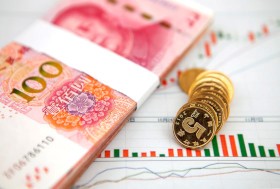
The Chinese yuan reversed its recent downward trend against the US dollar to kick off the trading week, breaking below 6.7 on positive economic data. The latest figures show that the post-coronavirus recovery is doing well, from growth to retail sales. This has Beijing anticipating that the worldâs second-largest economy will be one of the few Asian countries to report growth in 2020. How will this benefit the currency?
According to the National Bureau of Statistics (NBS), China’s gross domestic product (GDP) advanced 2.7% in the third quarter, much lower than the previous three-month period’s 11.7% surge. The market had penciled in a gain of 3.2%. The Q3 GDP growth rate rose at an annualized rate of 4.9%.
Industrial production surged 6.9% year-over-year in September, up from 5.6% in August. Industrial capacity utilization hit 76.7% in the July-to-September period, up from 74.4% in the April-to-June quarter.
Retail sales increased at an annualized rate of 3.3% last month, up from 0.5% in August. China’s retail trade was driven by office supplies (12.2%), automobile sales (11.2%), medicine (9.6%), apparel (8.3%), and food and drinks (7.8%). The government did show a slump in sales for home appliances, furniture, telecommunications, and oil and oil products.
Last week, the Peopleâs Bank of China (PBoC) reported that year-to-date foreign direct investment (FDI) climbed 5.2% from the same time a year ago. In the month of September, the FDI jumped 25.1%.
Soon after the figures were released, central bank governor Yi Gang signaled his confidence in the Chinese economy. In an online International Banking Seminar of the Group of 30, an independent body of economic and financial leaders from the public and private sectors and academia, the head of the PBoC said in a statement:
I think the accumulative growth for the first three quarters of this year will be positive … For the whole year, we predict China GDP growth of around 2%.
The Chinese economy remains resilient with great potential. Continued recovery is anticipated, which will benefit the global recovery.
Yi added that the current suite of fiscal and monetary policy tools would concentrate on assisting small- and medium-sized businesses weather the economic storm clouds in the aftermath of the COVID-19 pandemic. With the yuan appreciating to an 18-month high, does this mean the central bank will intervene? The PBoC governor suggested that it should be left up to the market forces to decide the exchange rate between the yuan and the greenback.
The PBoC has not confirmed if it is injecting liquidity into the banking system. However, market observers anticipate that the central bank will leave its benchmark lending rate unchanged for the sixth consecutive month. The one-year Loan Prime Rate (LPR) is now 3.85%, while the five-year rate at 4.65%.
The USD/CNY currency pair tumbled 0.19% to 6.6848, from an opening of 6.6976, at 14:19 GMT on Monday. The EUR/CNY rose 0.4% to 7.8793, from an opening of 7.8472.
If you have any questions, comments, or opinions regarding the Chinese Yuan, feel free to post them using the commentary form below.